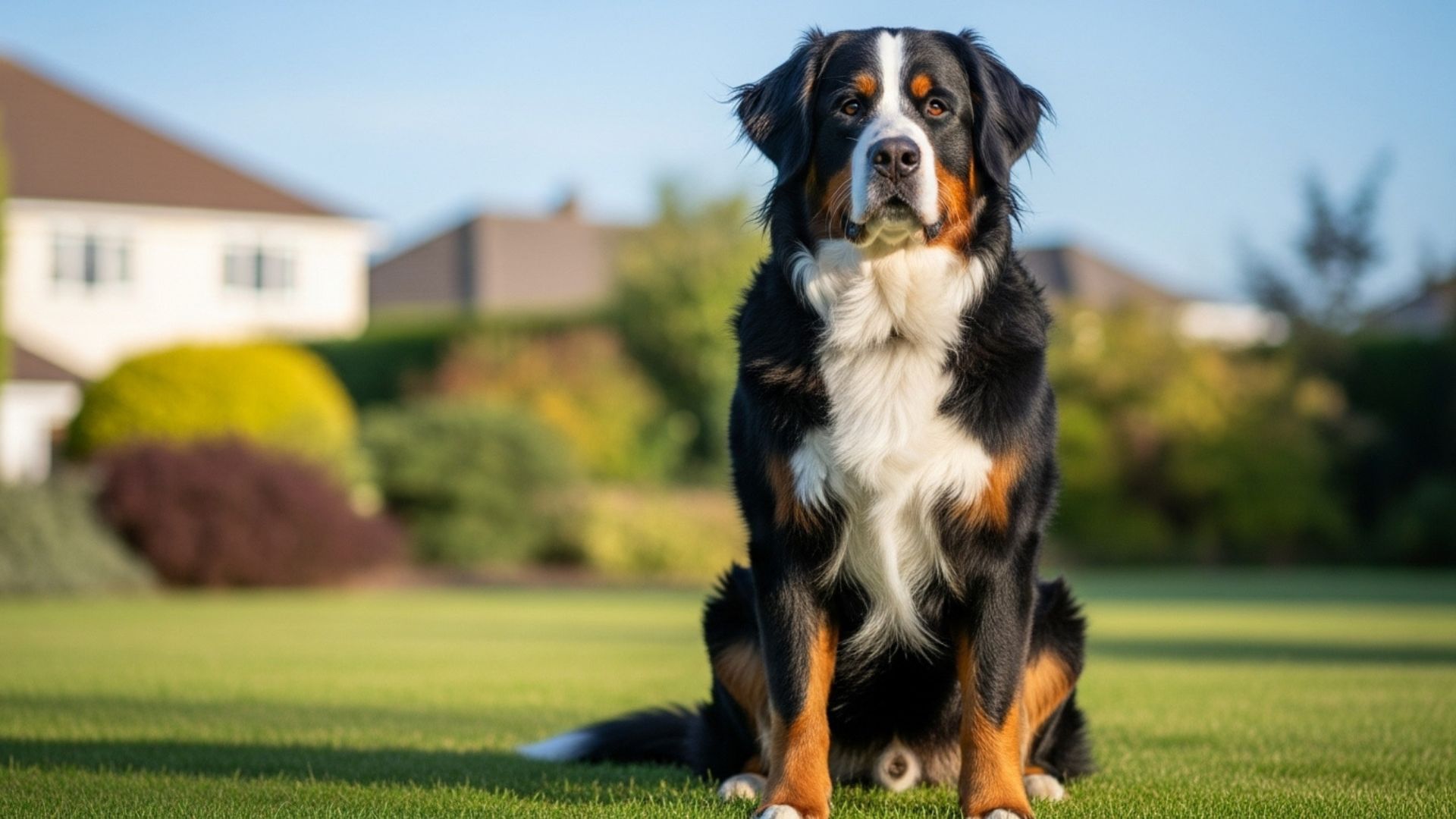Did you know that large dog breeds aren’t necessarily less healthy than smaller ones? According to a study published in J. Vet Sci, many large breeds live long, active lives when given proper nutrition and exercise. Yet, myths about their health still discourage first-time owners from choosing these gentle giants.
It’s time to set the record straight! While size may seem intimidating, many big dogs are surprisingly calm, loyal, and easy to care for. Their strength often comes with a soft, affectionate personality.
Some believe that larger dogs always face joint or heart problems—but that’s not entirely true. With mindful breeding and regular vet checkups, most thrive just as well as smaller breeds.
Another myth? They need endless space. In reality, many large dogs are happy to lounge indoors, provided they get daily walks.
So, let’s explore the healthiest, happiest large dog breeds perfect for first-time owners.
Healthy Large Dog Breeds For First-Time Owners
1. Leonberger

Meet the Leonberger—the dog that looks like a lion but loves like a teddy bear. Originally bred as a family companion for European nobility, this breed balances elegance with playfulness. Their temperament is steady, affectionate, and deeply people-oriented, making them gentle giants in every sense.
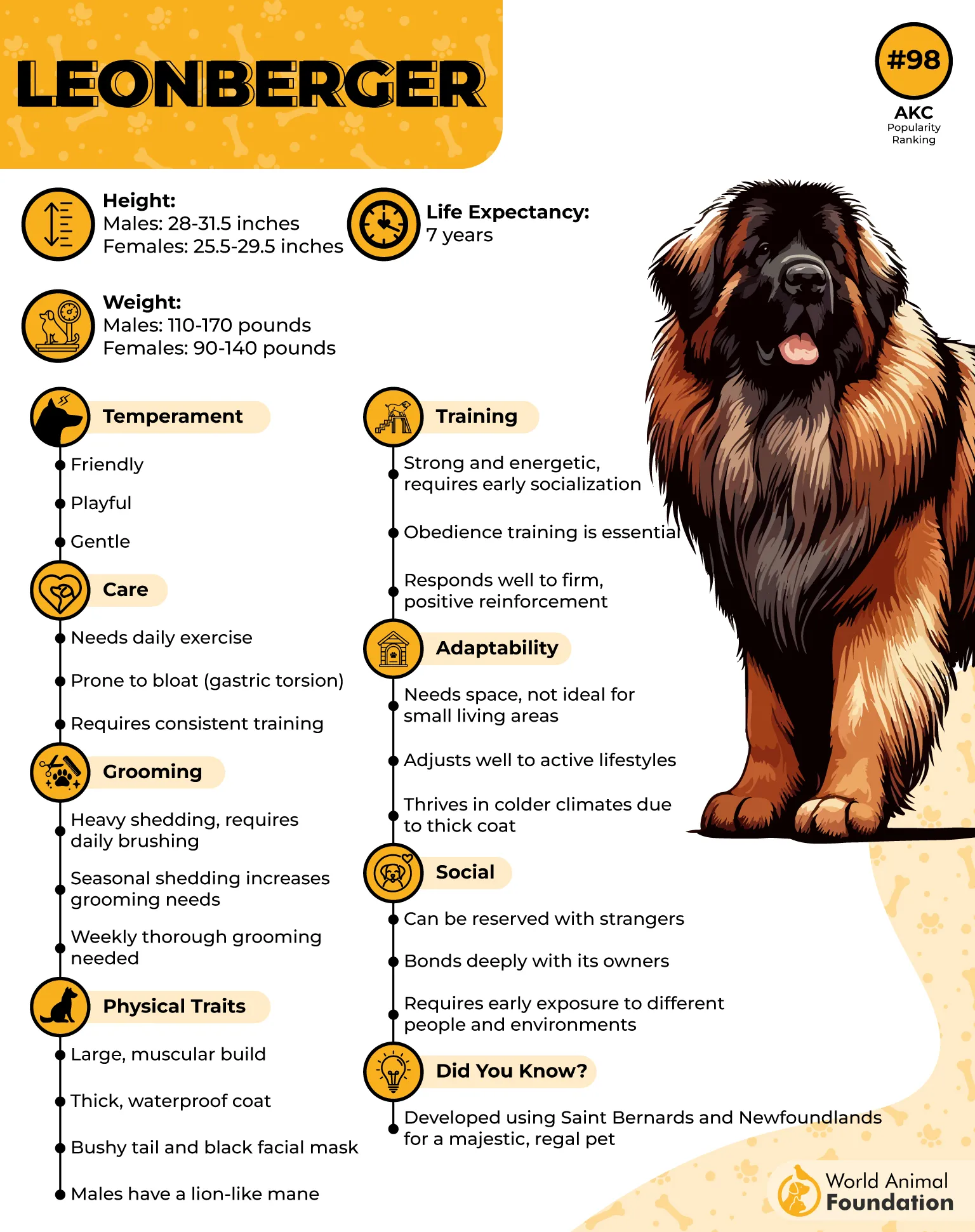
Calm indoors yet lively on outdoor adventures, Leonbergers often surprise first-time owners with how adaptable they are.
The emotional bond they form is second to none. Leonbergers crave family interaction and often mirror their owners’ moods. They thrive in homes that appreciate their sensitivity, loyalty, and goofy charm—a true people dog who wants to be part of every moment.
Living Environment & Grooming Needs:
Prefers spacious homes with access to outdoor play areas
Requires brushing several times a week to maintain its thick double coat
Enjoys cooler climates but adjusts well with proper care
Sheds seasonally, so keep that lint roller handy
Exercise & Energy Needs:
Loves swimming, hiking, and long walks
Needs moderate daily exercise to prevent boredom
Enjoys interactive play sessions and social outings
AKC adds that training a Leonberger is like coaching a gentle giant with a golden heart—they respond beautifully to patience and positive reinforcement. Their intelligence shines through calm consistency and clear direction. Early socialization ensures their natural gentleness blossoms into lifelong confidence.
Leonbergers are generally healthy, with good longevity for a large breed. With proper diet, joint care, and regular exercise, they often live 9–10 happy years. For first-time owners wanting a loving, majestic companion, the Leonberger is loyalty personified.
2. Great Pyrenees

The Great Pyrenees is the canine version of a quiet guardian angel—watchful, devoted, and dignified. WebMD notes that originally bred to protect livestock in the French mountains, they now protect sofas, children, and your peace of mind. Calm, thoughtful, and endlessly gentle, they carry themselves with noble confidence, turning every backyard into a peaceful pasture.
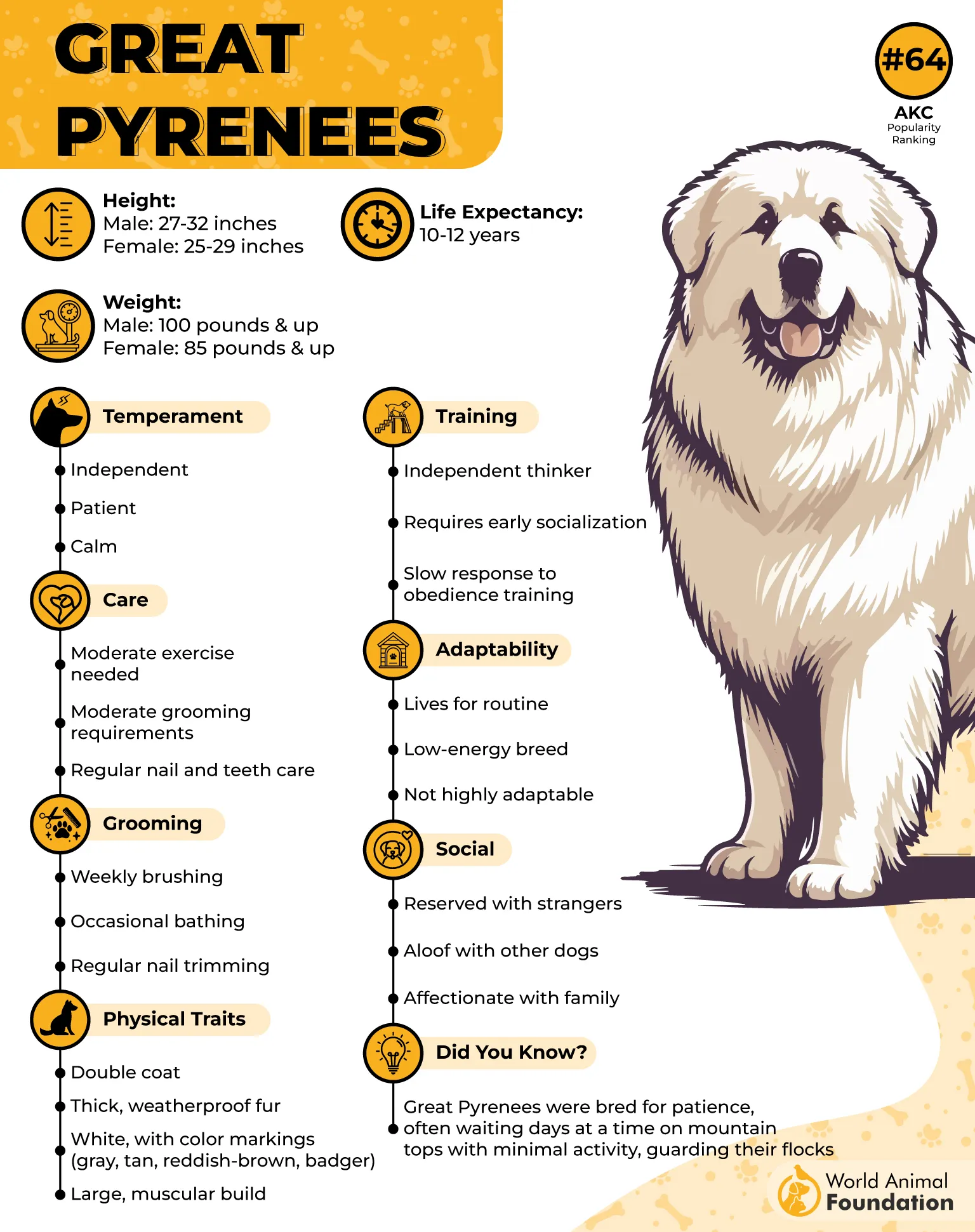
These dogs bond deeply with their families. Their affection is steady rather than showy—they’ll lean against you or rest nearby to keep watch. The Great Pyrenees thrives in a stable, loving home where loyalty and patience are appreciated.
Living Environment & Grooming Needs:
Best suited to homes with fenced yards or rural spaces
Double coat requires weekly brushing; daily during shedding seasons
Tolerates cold weather exceptionally well
Appreciates quiet, predictable environments
Exercise & Energy Needs:
Prefers moderate walks rather than vigorous runs
Enjoys light outdoor activity and purpose-driven tasks
Benefits from structured play to keep both body and mind active
Training a Great Pyrenees calls for calm authority and respect—they were bred to think independently. Early socialization and consistent routines turn them into cooperative and devoted partners. Their intelligence shines when given autonomy balanced with gentle guidance.
Health-wise, this breed benefits from slow, steady growth and joint support. Typically living 10–12 years, they are strong and resilient when well cared for. For first-time owners seeking calm, protective companionship, the Great Pyrenees is a regal choice.
3. Greyhound

The Greyhound—sleek, soulful, and surprisingly lazy—is living proof that fast dogs can have slow lifestyles. With a history rooted in racing and royal admiration, this breed exudes athletic grace without demanding constant motion. Their temperament is mild, affectionate, and a bit catlike; they adore lounging and will happily nap for hours after a brief sprint.
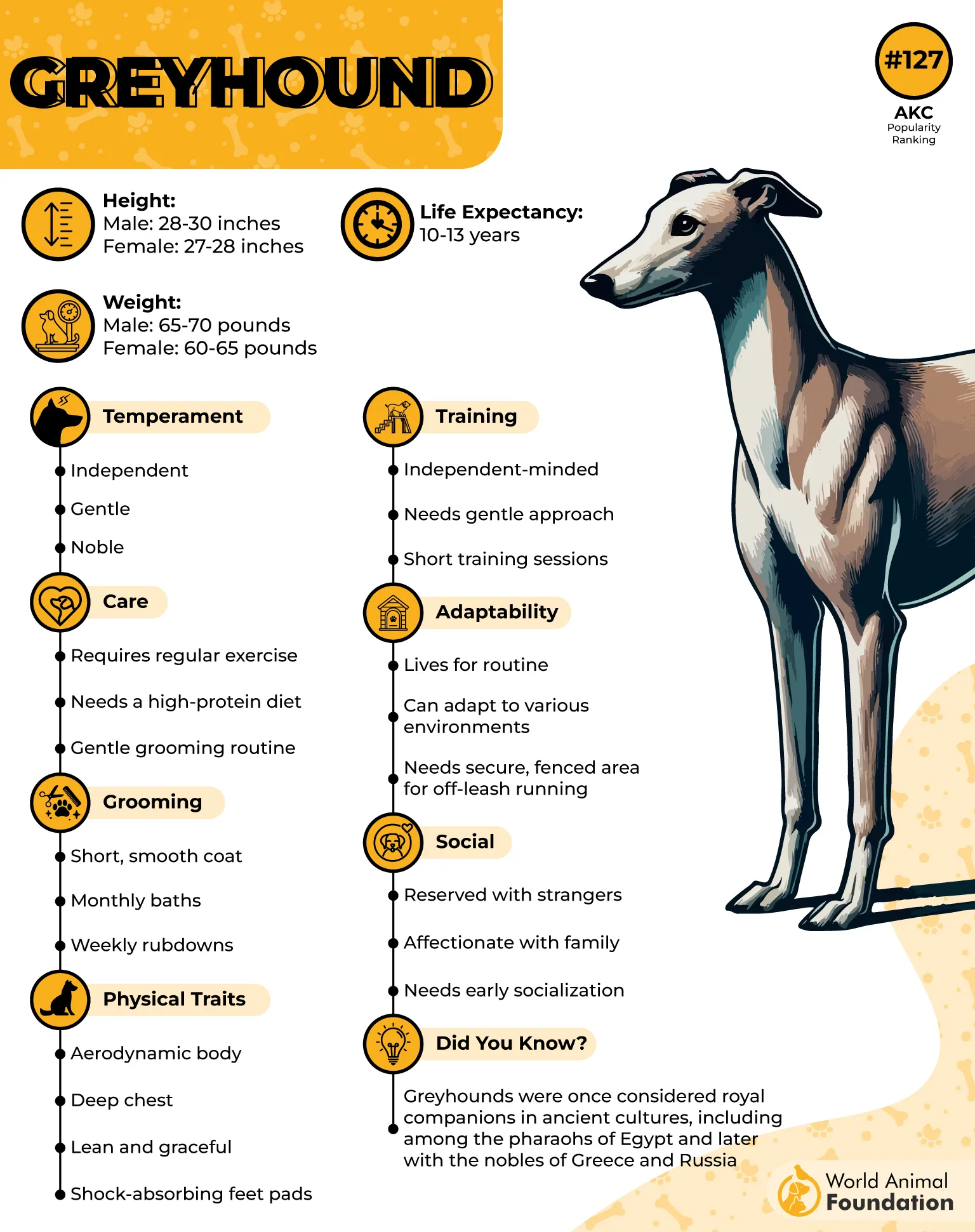
Their emotional bond is understated yet profound. Greyhounds love quietly—they’ll rest a paw on your lap or curl by your feet without fuss. They’re ideal for families who value gentleness and emotional intelligence in a pet.
Living Environment & Grooming Needs:
Adapts beautifully to apartment or house living
Low-maintenance coat that needs occasional brushing
Prefers soft bedding due to lean body type
Sensitive to extreme cold; cozy sweaters encouraged
Exercise & Energy Needs:
Thrives on short bursts of speed (zoomies included)
Needs one or two brisk walks a day
Loves safe, fenced spaces to stretch those long legs
Training a Greyhound is pure joy—they’re clever, responsive, and eager to please, especially when rewarded with praise or treats. They pick up routines quickly but need gentle correction rather than firmness.
With few hereditary issues and a lifespan of around 10–14 years, Greyhounds are among the healthiest large breeds. For first-time owners seeking elegance, ease, and affection in one long-legged package, the Greyhound is pure perfection.
4. Bernese Mountain Dog

The Bernese Mountain Dog is the ultimate blend of beauty and brawn—a fluffy working breed with a heart of gold. Originating from the Swiss Alps, these dogs were bred to pull carts and herd livestock, but now pull hearts instead. Their temperament is cheerful, loyal, and deeply family-oriented.
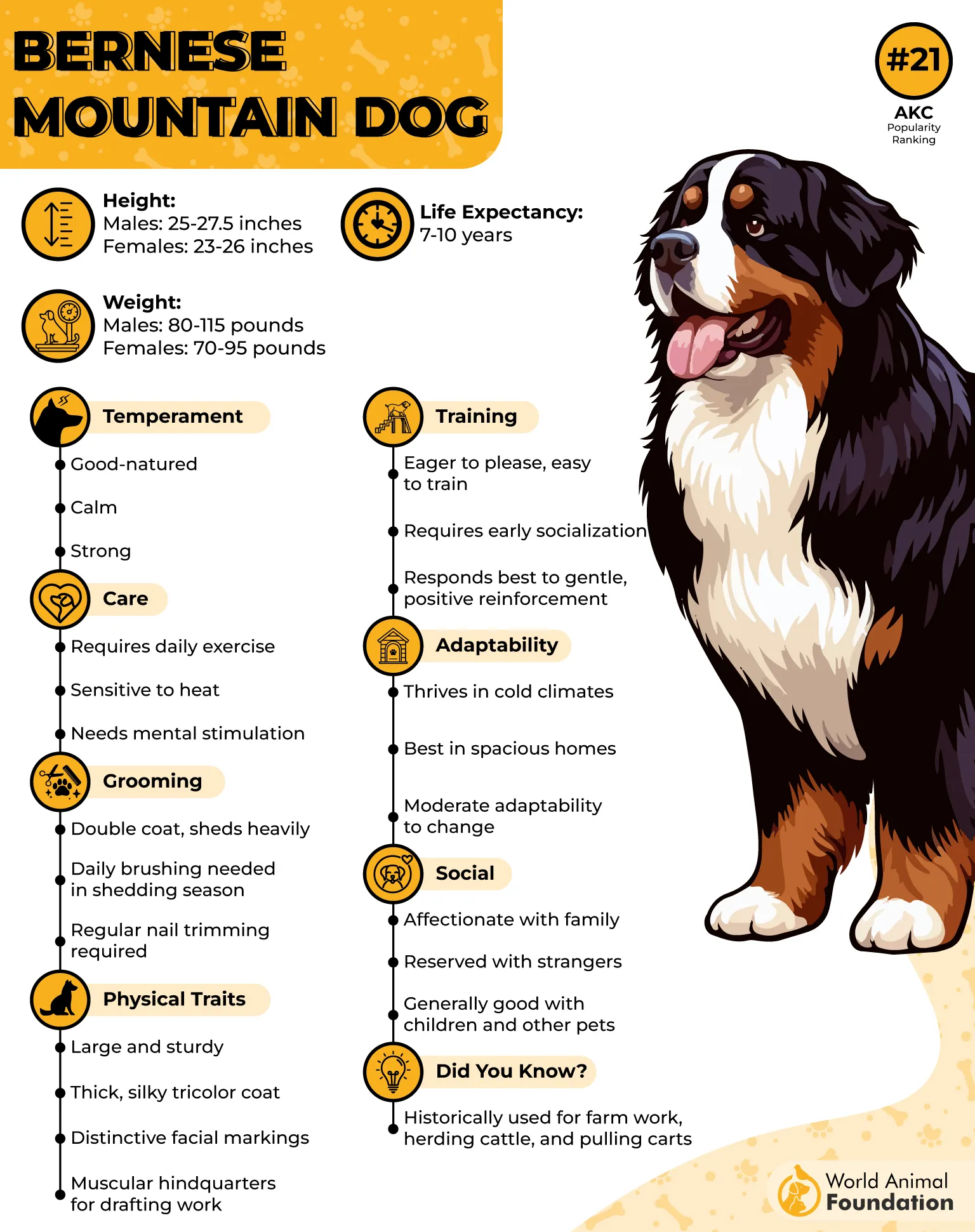
They form incredibly close emotional bonds, thriving on companionship and affection. The Bernese is happiest when surrounded by people—children, adults, and even other pets. They make every home feel warmer and every family moment richer.
Living Environment & Grooming Needs:
Thrives in cooler climates and spacious homes
Needs regular brushing to manage its thick tri-colored coat
Sheds moderately year-round with heavier seasonal cycles
Loves being part of daily family activities
Exercise & Energy Needs:
Requires moderate daily walks or light hikes
Enjoys pulling games or short agility exercises
Benefits from gentle play sessions to maintain stamina
Britannica notes that training a Bernese Mountain Dog is a rewarding experience—they’re intelligent, eager, and sensitive to tone. They respond best to encouragement and consistency, quickly mastering commands when praised sincerely.
While they can face genetic concerns like hip dysplasia, proper care ensures they live fulfilling lives of 7–10 years. For new owners, their forgiving nature, affection, and charm make them an ideal large-breed introduction.
5. Newfoundland

Newfoundlands are the ocean’s teddy bears—strong, sweet, and utterly devoted. Once lifesavers for sailors, they now rescue hearts instead. Calm, nurturing, and unflappably gentle, their temperament defines the phrase “gentle giant.”
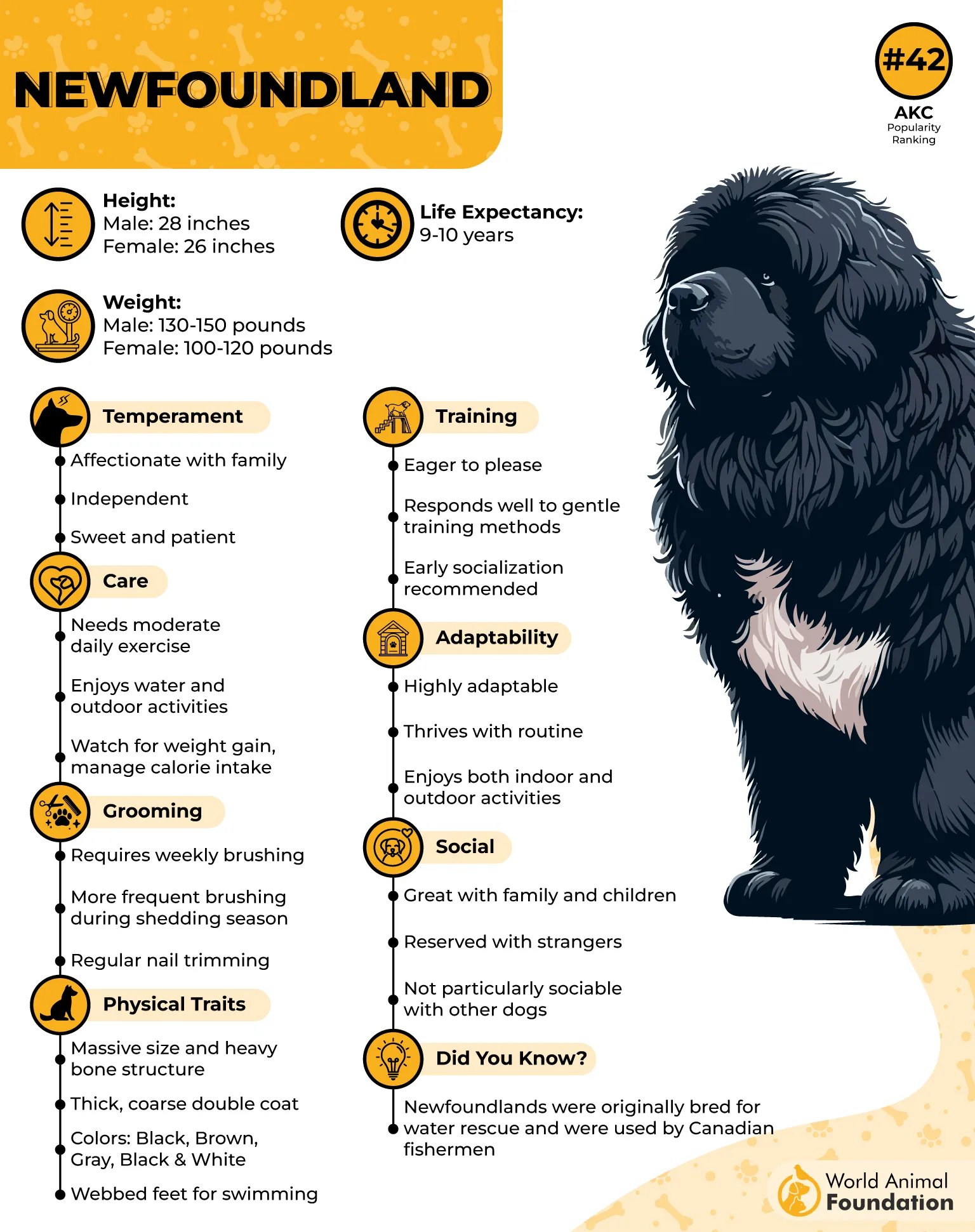
Emotionally, they connect deeply and loyally. Newfies are intuitive, sensing when you need comfort or company. Their peaceful nature makes them perfect for families, kids, and anyone seeking unconditional love on four paws.
Living Environment & Grooming Needs:
Enjoys spacious homes but adapts to quieter living if walked regularly
A thick double coat needs brushing multiple times a week
Prefers cooler climates
May drool, but it’s a small price for a heart this big
Exercise & Energy Needs:
Loves swimming—water is their natural element
Needs consistent but gentle activity to prevent weight gain
Enjoys slow hikes and family walks
Training a Newfoundland is like teaching a kind old soul—they respond best to kindness and patience. Their intelligence is subtle but steady, and they quickly learn routines that keep them content.
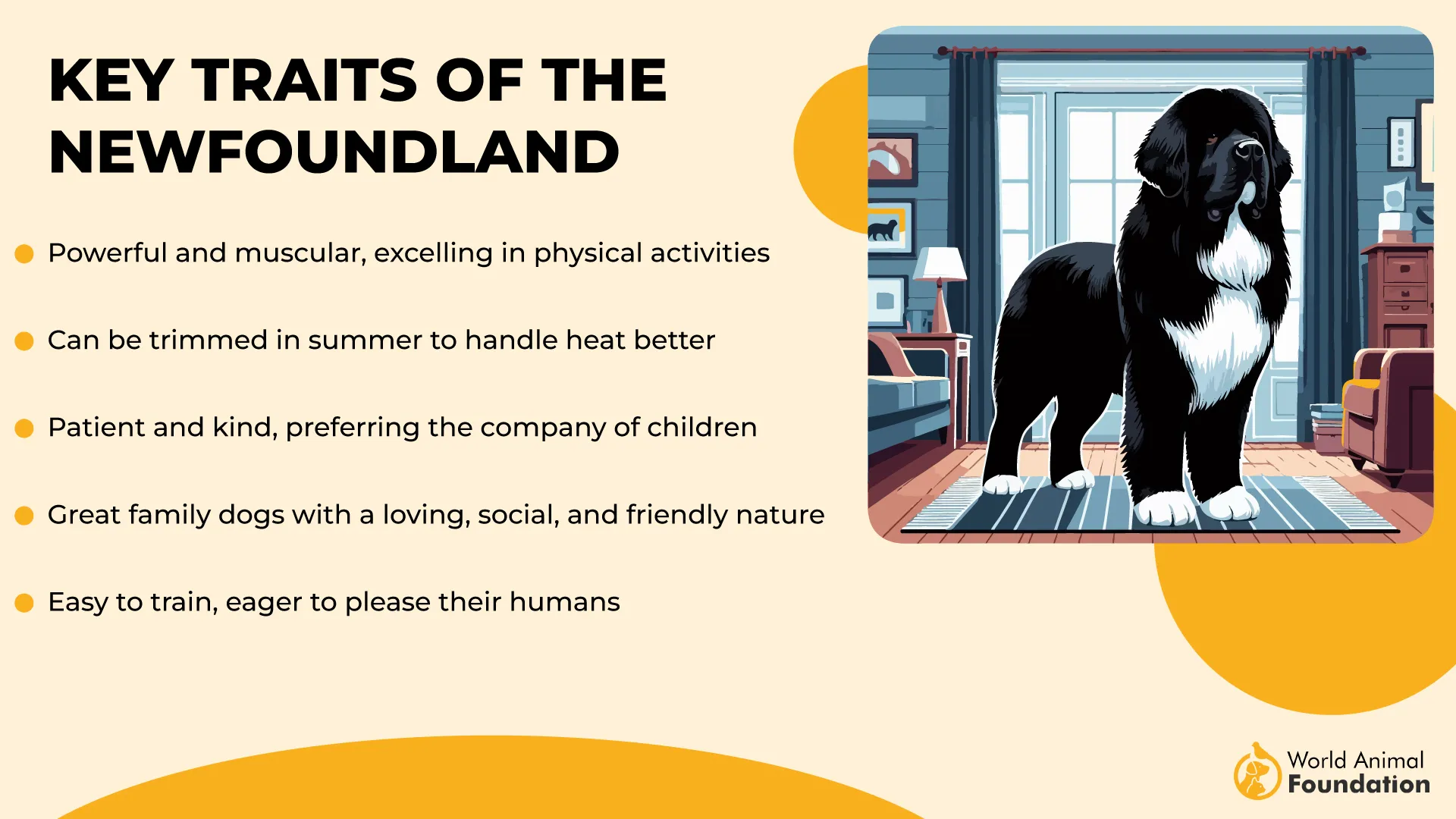
Their health is generally solid with proper joint care, and they often live 9–10 years. For first-time owners, Newfoundlands bring love, calm, and bravery all wrapped in one giant, fluffy package.
6. Irish Setter
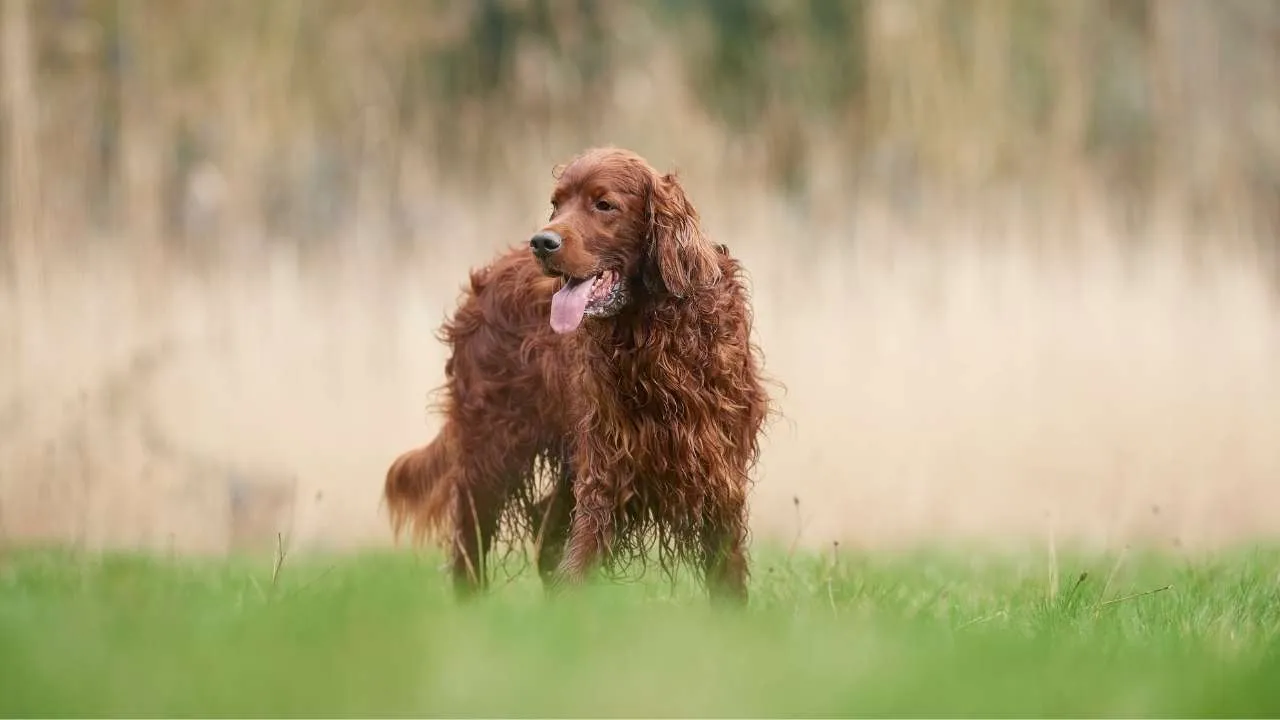
The Irish Setter is the red-haired extrovert of the dog world—elegant, energetic, and impossible to ignore. With its gleaming mahogany coat and infectious enthusiasm, this breed lives life like it’s a never-ending adventure. The Irish Setter’s personality is pure sunshine: outgoing, affectionate, and brimming with joy.

Their emotional connection with humans is heart-melting. They thrive on attention and reward affection with boundless devotion. Irish Setters are known to form friendships with everyone, including children and other dogs.
Living Environment & Grooming Needs:
Prefers open spaces or large yards for play
Needs regular brushing to maintain that signature silky coat
Adapts to active families or countryside life
Requires indoor companionship—they dislike being left alone
Exercise & Energy Needs:
Craves vigorous activity, like fetch or running
Needs at least an hour of exercise daily
Enjoys mental challenges such as scent games
Training an Irish Setter requires humor, patience, and plenty of treats. Their intelligence comes with a mischievous streak, so keeping sessions upbeat and engaging works wonders.
Generally healthy with a lifespan of 12–15 years, they benefit from balanced diets and joint support. For first-time owners who love energy, laughter, and loyalty, the Irish Setter is the perfect partner in joy.
7. Greater Swiss Mountain Dog

The Greater Swiss Mountain Dog is strength wrapped in serenity—a confident worker with a heart of gold. Originally bred to drive cattle and guard farms in Switzerland, this breed now thrives as a devoted family protector. Calm, courageous, and balanced, they bring a reassuring sense of stability to every household.
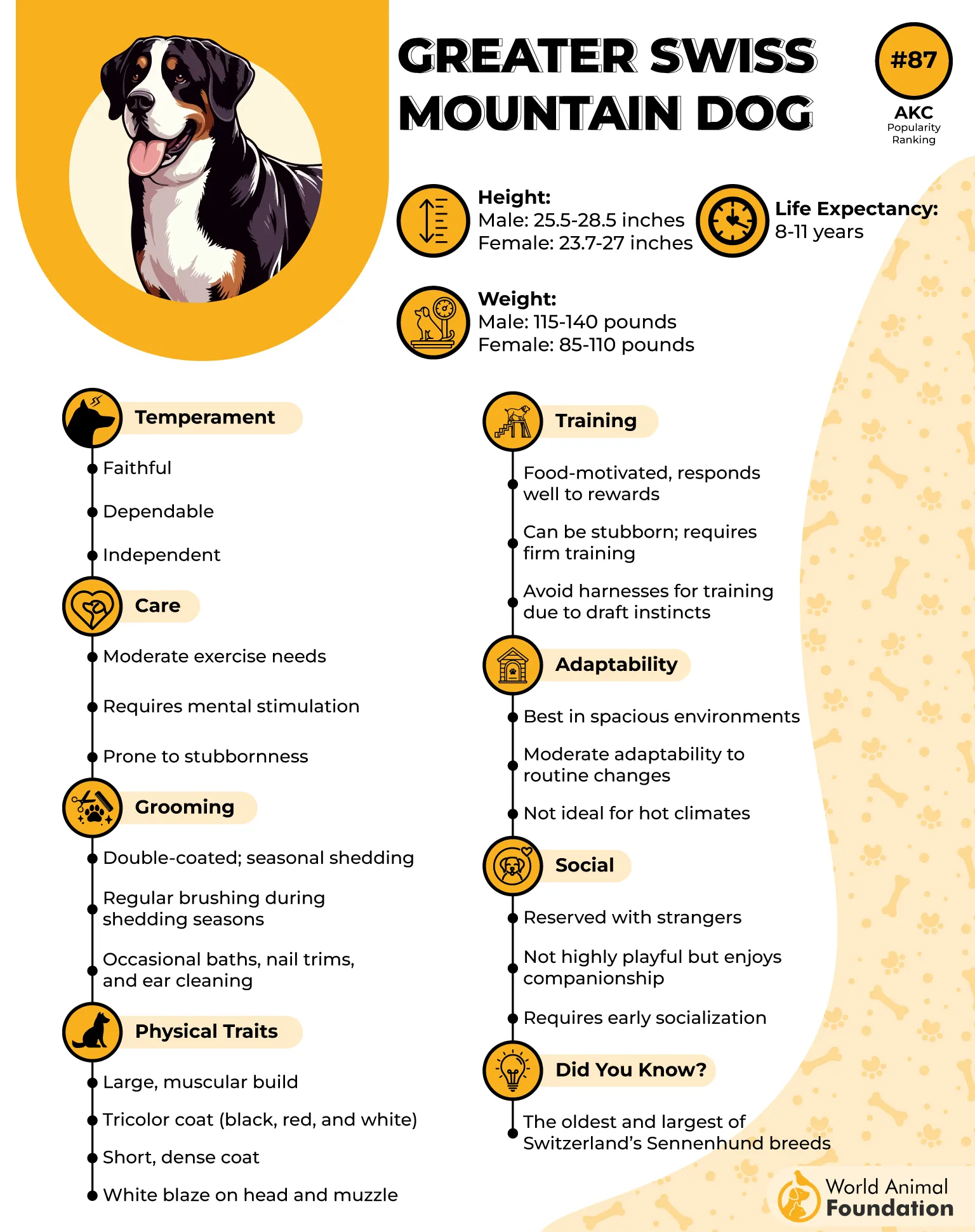
Their emotional bond runs deep and steadfast. Swissies form unshakeable attachments to their people, often shadowing them around the house like polite bodyguards. They’re affectionate without being demanding, and their quiet confidence soothes even the busiest home.
Living Environment & Grooming Needs:
Ideal for homes with secure yards and room to roam
Low-maintenance coat needing weekly brushing
Comfortable in cooler climates
Enjoys time both indoors and outdoors with family
Exercise & Energy Needs:
Needs consistent daily walks and purposeful activity
Enjoys cart-pulling, hiking, and obedience training
Balances bursts of energy with calm relaxation
Training a Greater Swiss Mountain Dog is straightforward—they’re eager learners who respond well to structured routines. Their confidence makes them quick to adapt, provided training is firm but kind.
Health-wise, they’re sturdy with proper joint and heart care, often living 10–12 years. For first-time owners seeking loyalty, intelligence, and an unflappable temperament, the Swissy is a lifelong companion worth every moment.
FAQs
How can I ensure my large dog stays healthy throughout its life?
Focus on a balanced diet, regular vet visits, and consistent exercise. Keep an eye on weight, joint health, and dental care—especially as they age. Mental stimulation, quality food, and early training go a long way toward a long, happy life.
Can large dogs be easy to train for someone new to dog ownership?
Absolutely! Many large breeds, like the Bernese Mountain Dog or Great Pyrenees, are intelligent and eager to please. With positive reinforcement, consistency, and patience, even first-time owners can train them successfully.
How much exercise do healthy large dog breeds need daily?
Most large dogs thrive with at least 45–90 minutes of activity per day. Mix walks, playtime, and light training sessions to keep both body and mind engaged. Some, like Greyhounds, love short bursts of energy followed by plenty of lounging!
Conclusion
Choosing a large breed dog as a first dog is like gaining a big, furry best friend with a gentle nature and a goofy grin. From the ever-loved Labrador Retriever to the loyal Golden Retriever and cuddly Saint Bernard, there’s a perfect match for every kind of pet owner.
For novice owners with an active lifestyle, intelligent dogs like the Border Collie or German Shepherd make great dogs for both brains and brawn. Prefer a calm buddy? Try the laid-back Basset Hound or sweet Cavalier King Charles Spaniel—pure happiness in fur form.
So, grab that leash, plan some ball games, and start spending time with your new puppy. Your journey as first-time dog owners begins now—tail wags guaranteed!


